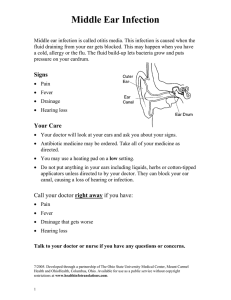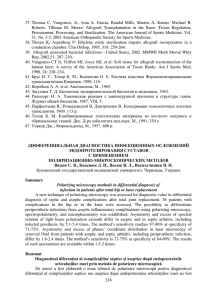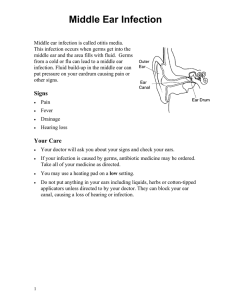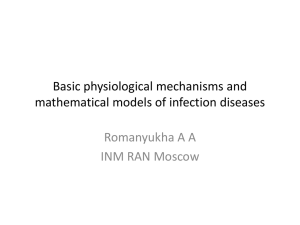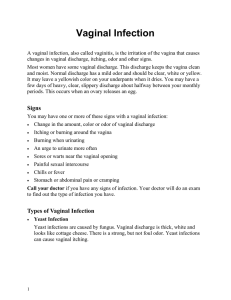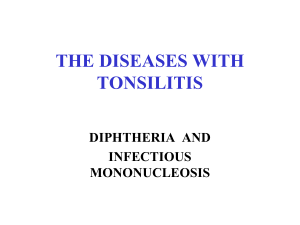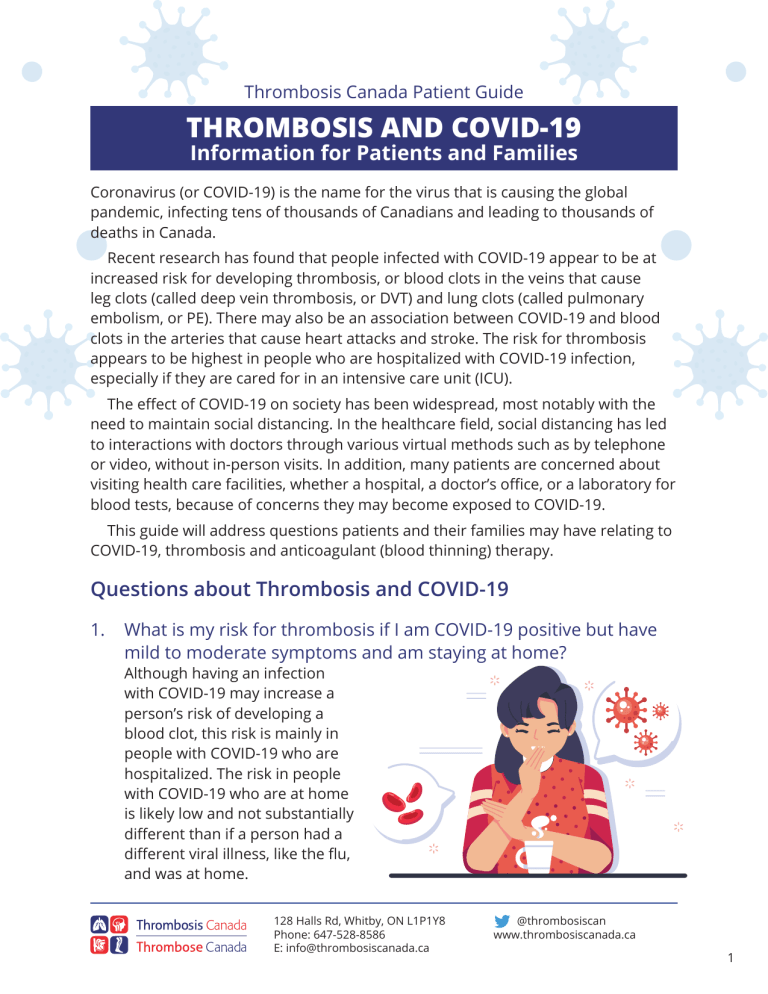
Thrombosis Canada Patient Guide THROMBOSIS AND COVID-19 Information for Patients and Families Coronavirus (or COVID-19) is the name for the virus that is causing the global pandemic, infecting tens of thousands of Canadians and leading to thousands of deaths in Canada. Recent research has found that people infected with COVID-19 appear to be at increased risk for developing thrombosis, or blood clots in the veins that cause leg clots (called deep vein thrombosis, or DVT) and lung clots (called pulmonary embolism, or PE). There may also be an association between COVID-19 and blood clots in the arteries that cause heart attacks and stroke. The risk for thrombosis appears to be highest in people who are hospitalized with COVID-19 infection, especially if they are cared for in an intensive care unit (ICU). The effect of COVID-19 on society has been widespread, most notably with the need to maintain social distancing. In the healthcare field, social distancing has led to interactions with doctors through various virtual methods such as by telephone or video, without in-person visits. In addition, many patients are concerned about visiting health care facilities, whether a hospital, a doctor’s office, or a laboratory for blood tests, because of concerns they may become exposed to COVID-19. This guide will address questions patients and their families may have relating to COVID-19, thrombosis and anticoagulant (blood thinning) therapy. Questions about Thrombosis and COVID-19 1. What is my risk for thrombosis if I am COVID-19 positive but have mild to moderate symptoms and am staying at home? Although having an infection with COVID-19 may increase a person’s risk of developing a blood clot, this risk is mainly in people with COVID-19 who are hospitalized. The risk in people with COVID-19 who are at home is likely low and not substantially different than if a person had a different viral illness, like the flu, and was at home. 128 Halls Rd, Whitby, ON L1P1Y8 Phone: 647-528-8586 E: info@thrombosiscanada.ca @thrombosiscan www.thrombosiscanada.ca 1 2. If I have COVID-19 and have mild or moderate symptoms (I am at home), should I be receiving a blood thinner such as heparin injections or aspirin? In general, people with COVID-19 do not need to receive blood thinners such as heparin or aspirin. Such treatments are associated with an increased risk for bleeding, especially in elderly people, and it is advisable to discuss the possible risks and benefits with your doctor. 3. I have had a prior occurrence of thrombosis (DVT or PE) but am no longer receiving blood thinning therapy. If I become infected with COVID-19, should I restart the blood thinner? People who are at higher risk of developing blood clots, for example if they have had a prior blood clot, stroke, or heart attack might benefit from receiving a blood thinner or aspirin but only if the risk for bleeding is not excessive. As another means of preventing blood clots, it is advisable to not stay in bed the entire day but to try and walk around for a few minutes 3-4 times each day. 4. I have an abnormal mutation (factor V Leiden or prothrombin gene) that predisposes to developing thrombosis but have never had an occurrence of thrombosis. If I become infected with COVID-19, should I start the blood thinner or aspirin? In general, people with abnormalities of the blood that predispose towards blood clotting, but without any prior episodes of blood clotting, do not need to receive blood thinners as their overall risk remains low. This would apply to most people with these abnormal mutations but there is a small minority of people with more severe blood abnormalities in whom blood thinners would be reasonable. 5. I have a family member who is living in a retirement home where a resident is affected with COVID-19. Should my family member, 128 Halls Rd, Whitby, ON L1P1Y8 Phone: 647-528-8586 E: info@thrombosiscanada.ca @thrombosiscan www.thrombosiscanada.ca 2 who is otherwise well, receive a blood thinner or aspirin as protection against thrombosis? People in a retirement home are considered no differently than people at home if they have COVID-19 infection and would not need a blood thinner or aspirin. 6. I have a family member who is living in a nursing home where a resident is affected with COVID-19. Should my family member, who is unwell, receive a blood thinner or aspirin as protection against thrombosis? People who are cared for in a nursing home tend to have illnesses that increase their risk for blood clots and this risk may be further increased if they develop COVID-19 infection. For these reasons, it is advisable that such people receive blood thinners to prevent blood clots. However, this decision should be aligned with the goals of care as decided upon by the patient and family and their doctor. 7. I have a family member who is in hospital with COVID-19 infection and is unwell. Is he/she at increased risk for developing blood clots? Should he/she be receiving blood thinners to prevent blood clots? People with COVID-19 infection who are hospitalized tend to be sicker and, typically, require oxygen and other supportive therapy. In these people, the risk for blood clots is considered high as the COVID-19 infection appears to cause changes in the blood that can lead to blood clot formation. For these reasons, it is advisable that all hospitalized people with COVID-19 infection receive blood thinners such as heparin, which is given by an injection just below the skin once or twice a day. The doctors will decide on which blood thinner and the dose according to the individual characteristics of a patient. In a few instances where blood thinners cannot be given, other measures to prevent blood clots can be given to patients such as special leg stockings or compression devices that help to increase the flow of blood. 128 Halls Rd, Whitby, ON L1P1Y8 Phone: 647-528-8586 E: info@thrombosiscanada.ca @thrombosiscan www.thrombosiscanada.ca 3 8. I was hospitalized for COVID-19 but did not require care in the ICU. I have recovered and am now at home. I was given blood thinning injections while I was in the hospital. Should I be receiving blood thinners now, while I am at home? After recovering from COVID-19 infection and now at home, some people who have not fully recovered may be at continued risk for developing blood clots and continuation of blood thinning treatment for up to 4 weeks after leaving the hospital may be appropriate. The decision about whether a person needs to continue blood thinners after going home will be made by your doctor based on individual patient characteristics but should certainly be at least considered in all cases. 9. I was hospitalized for COVID-19 and did require care in the ICU. I have recovered and am now at home. I was given blood thinning injections while I was in the hospital. Should I be receiving blood thinners now, while I am at home? Only a small minority of patients (probably less than 5%) will have a serious, life-threatening form of COVID-19 infection and will require care in an ICU. Such patients are considered to be at very high risk of developing blood clots and blood thinning treatment is highly advisable, in some cases with higher doses. After such patients recover enough to leave the hospital, their risk for blood clots may continue to be high and blood thinning treatment may be beneficial even when a patient has gone home. As with COVID-19 patients who were hospitalized but not cared for in an ICU, blood thinners should be considered for up to 4 weeks after discharge from hospital. 128 Halls Rd, Whitby, ON L1P1Y8 Phone: 647-528-8586 E: info@thrombosiscanada.ca @thrombosiscan www.thrombosiscanada.ca 4 10. I have young children and have heard that I should watch out for ‘dusky-coloured toes’ as an indicator of COVID-19. What does this mean? Are dusky-coloured toes in children a sign that a blood clot is present? The risk that children will develop COVID-19 illness is very low, probably less than 1%. There have been some reports (none in Canada so far) that children have been getting a flu-like illness with fever, rash and duskycoloured toes. These cases are very rare and are not thought to be caused by blood clots, and they may not be related to the coronavirus. Any person, young or old, who develops dusky coloured toes that persists should seek medical attention. 11. I am pregnant and have COVID-19 but am well, with very mild symptoms. Should I be receiving blood thinners during pregnancy? What about after delivery? In people who are pregnant and have COVID-19 infection, the risk for blood clots is low and blood thinners are not generally needed during the pregnancy and after delivery. There are some exceptions to this, for example if a pregnant woman had a prior episode of blood clotting and is now at higher risk for blood clots, in which case it would be reasonable to give blood thinners during pregnancy and definitely after delivery. 12. If I had a prior blood clot, am I at higher risk of developing COVID-19 infection? People with prior blood clots are not at increased risk of developing COVID-19 infection. 128 Halls Rd, Whitby, ON L1P1Y8 Phone: 647-528-8586 E: info@thrombosiscanada.ca @thrombosiscan www.thrombosiscanada.ca 5 13. If I have COVID-19 infection, am I at increased risk of developing a heart attack or stroke? There are some reports of people with COVID-19 infections developing blood clots in arteries that cause a heart attack or stroke but these episodes appear to be infrequent and may be from to risk factors that are unrelated to the COVID-19 infection. Any person who has symptoms of a heart attack (chest pain or pressure) or a stroke (weakness or numbness of one side of the face, an arm or a leg, or difficulty with speech) should seek prompt medical attention. Questions about Blood Thinning Treatment and Social Distancing 1. I am receiving warfarin to prevent blood clots because of an irregular heartbeat (or atrial fibrillation) and have blood testing (INR test) every 2 to 4 weeks. I am concerned about visiting the laboratory for blood testing. a. b. Can I go to the laboratory facility less often for blood tests? Yes, for patients who have INR levels that have been consistently within or close to the therapeutic range, the frequency of INR testing can be spread out to every 8 weeks, and in some patients testing can be spread out to every 12 weeks. If this is done, ensure that your doctors are aware of any changes in your health or medications as this may prompt the need for more frequent INR testing. Is there another blood thinner that I can use instead of warfarin that does not need blood testing? Yes, for many patients there are other blood thinners, called direct oral 128 Halls Rd, Whitby, ON L1P1Y8 Phone: 647-528-8586 E: info@thrombosiscanada.ca @thrombosiscan www.thrombosiscanada.ca 6 anticoagulants (or DOACs), that can be taken instead of warfarin and do not require regular blood testing. These DOACs may be as safe to use or safer than warfarin but are more expensive than warfarin. Check with your doctor to see if you are eligible to receive this type of blood thinner. c. Is there a way I can check my blood thinning with a device at home? Yes, for people who are taking warfarin there is a hand-held device that uses a blood sample obtained by a pinprick to measure the INR level in a similar way that a glucometer device measures blood sugar levels in people with diabetes. Patients who are considering using this device require education on how to do the test and how to adjust their dose of warfarin according to the INR level. The device and blood sample strips cost several hundred dollars and the cost is not covered by provincial health care plans. 2. I developed a blood clot a few weeks/months before the COVID-19 pandemic and am receiving blood thinners. Do I need to visit a health care facility to have additional X-ray tests that will see if the blood clot is still there? In general, patients who have had a blood clot in the leg or lungs do not need repeat X-ray testing to see if the blood clot has gone away. If symptoms such as leg swelling or pain, or chest pain and difficulty breathing have improved during blood thinning treatment this usually means the blood clot has shrunk or even gone away. If there are new symptoms or worsening of symptoms, this should prompt an assessment by your doctor and, in some cases (usually infrequently) a repeat of the X-ray tests is needed. 128 Halls Rd, Whitby, ON L1P1Y8 Phone: 647-528-8586 E: info@thrombosiscanada.ca @thrombosiscan www.thrombosiscanada.ca 7 3. I previously had a blood clot in the lungs (pulmonary embolism) but am no longer taking blood thinners. If I develop chest pain or difficulty breathing, should I go to the Emergency Department in case this is another blood clot? For people with chest pain or difficulty breathing, especially if they have had a prior blood clot in the lungs, in-person medical attention is advisable, preferably in an emergency or urgent care facility. This will allow your doctor to assess, with blood tests and a physical examination, whether another blood clot may have occurred, and to assess for other things that may cause these symptoms. 4. I previously had a blood clot in the legs (deep vein thrombosis) but am no longer taking blood thinners. If I develop leg pain or leg swelling, should I go to the Emergency Department in case this is another blood clot? For people who develop leg swelling or pain in the leg where they previously had a blood clot, it is advisable to contact your doctor about this, but an in-person visit may not be required. Often, people with leg blood clots may develop swelling and pain that is temporary and not a result of a new blood clot. Your doctor will be able to determine whether an in-person visit is needed for further tests. 128 Halls Rd, Whitby, ON L1P1Y8 Phone: 647-528-8586 E: info@thrombosiscanada.ca @thrombosiscan www.thrombosiscanada.ca 8

